Missed Sunday's lunar eclipse? Here are 8 more sky events to check out later this year
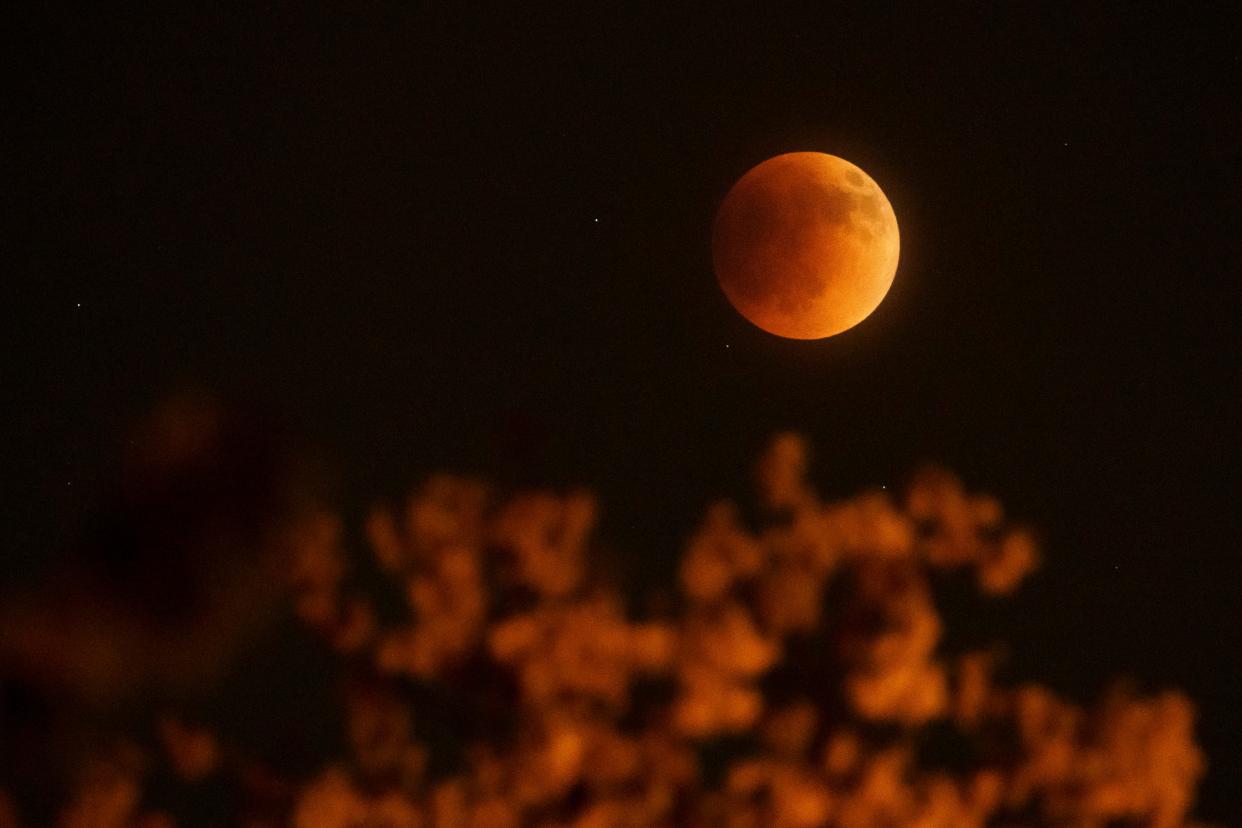
For those who were up late Sunday night, you may have noticed the moon looked a little redder than usual.
This was due to the "super flower blood moon" lunar eclipse, where the moon experienced only sunlight bending through the Earth's atmosphere, changing its color to red. Dubbed a "supermoon" because the full moon was at the moon's closest approach to Earth, it was also a "flower" moon because of the month when it occurred, when flowers often bloom.
But if you were fast asleep by the time the lunar eclipse made its mark in Greater Columbus, no worries! Here are eight more astronomical events to look forward to the rest of the year (weather permitting). These sky spectacles include meteor showers, five planets aligning and another total eclipse of the moon.
More: Weather forecast looking poor for those wanting to see upcoming Eta Aquarid meteor shower
May 30-31: Shooting stars
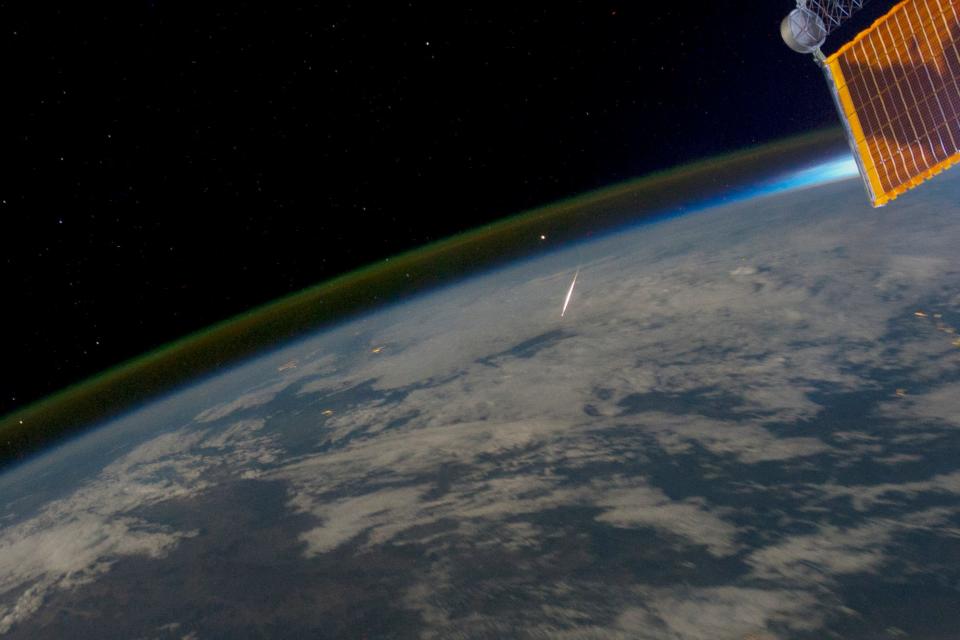
A majority of North America is expected to see brief displays of slow-moving meteors, or "shooting stars," during the overnight hours at the end of this month, according to Space.com. The reason is due to Earth sweeping through "a dense cloud of meteoroids expelled by the fracture of the nucleus of a small comet," the website explained.
June 18-27: Five planet alignment
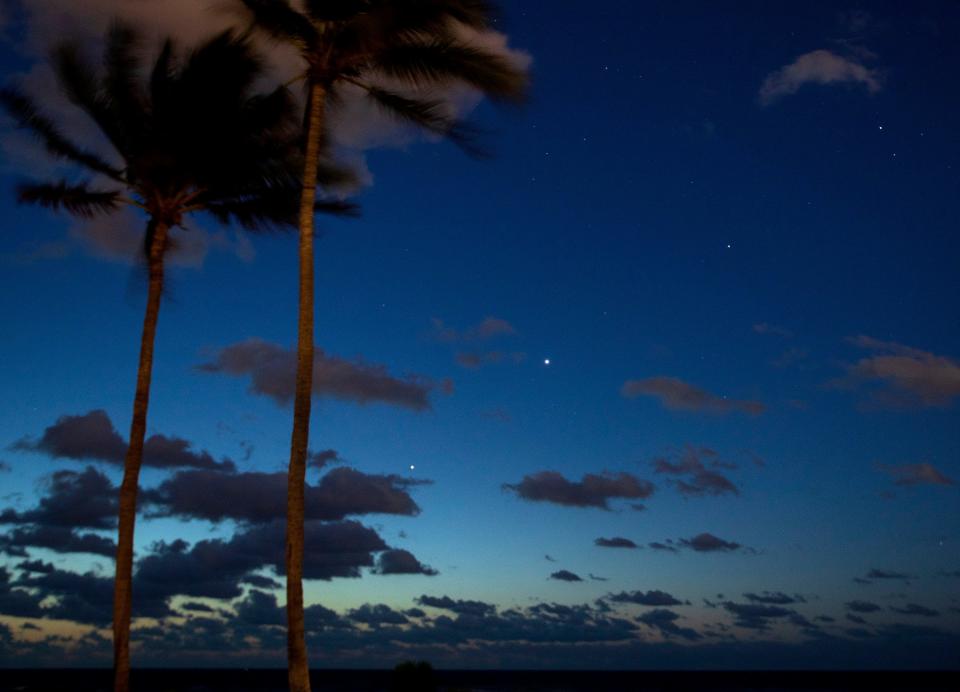
In the last two weeks of June, five planets will be visible to the naked eye in their correct order out from the sun: Mercury, Venus, Mars, Jupiter and Saturn. The moon also will "visit" each planet on specific mornings: Saturn on June 18; Jupiter on June 21; Mars on June 22; Venus on June 26 and Mercury on June 27, according to Space.com.
Those with a telescope and low light pollution might also be able to spot a sixth planet — Uranus, which hangs a bit higher than Venus and appears as a bright greenish dot, according to Smithsonian Magazine.
More: Eight 'Wonders of the World': Ohio History Center features display of ancient earthworks
July 13: Biggest supermoon of the year
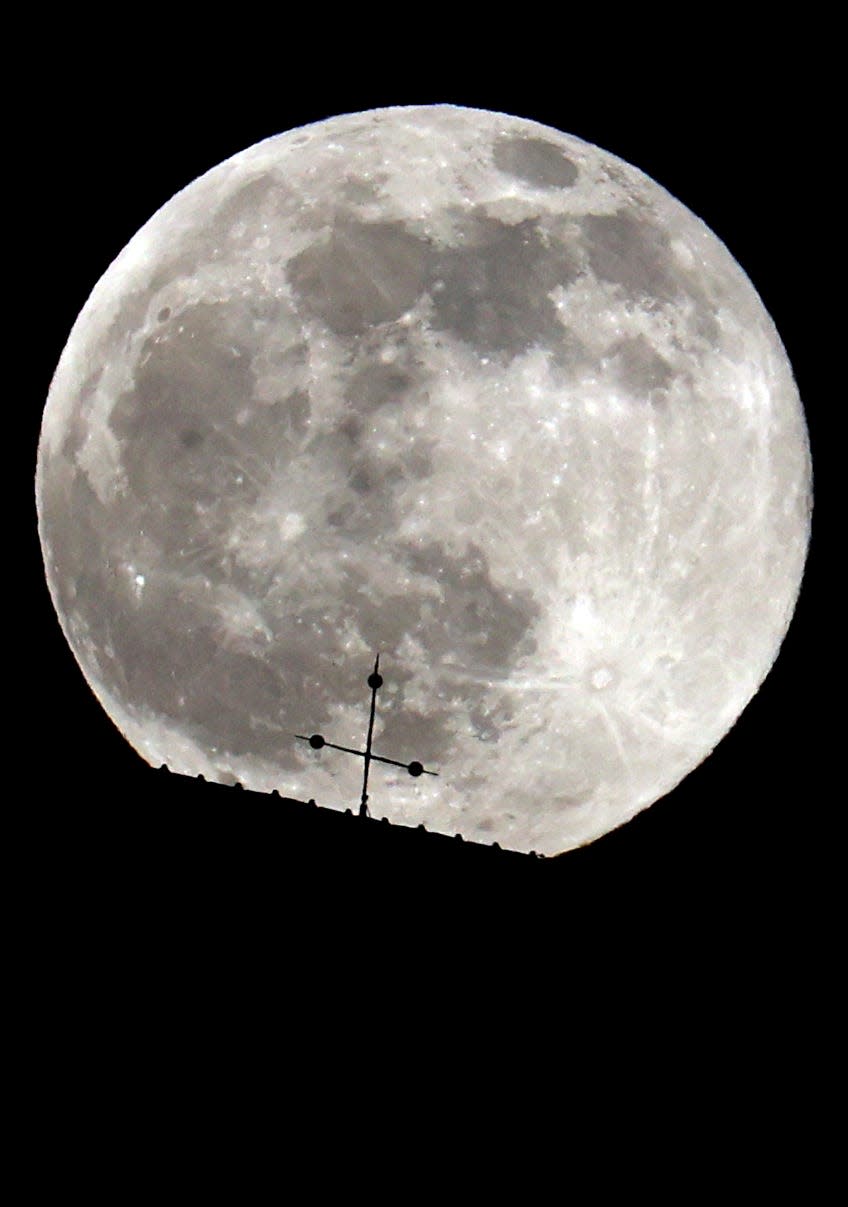
In July, the moon will arrive at its closest point to the Earth in 2022 at a distance of 221,994 miles. This full moon is called a "supermoon." The reason why supermoons only happen a few times a year is because the moon's orbit changes orientation while the Earth orbits the sun.
Aug. 12: Perseid meteor shower
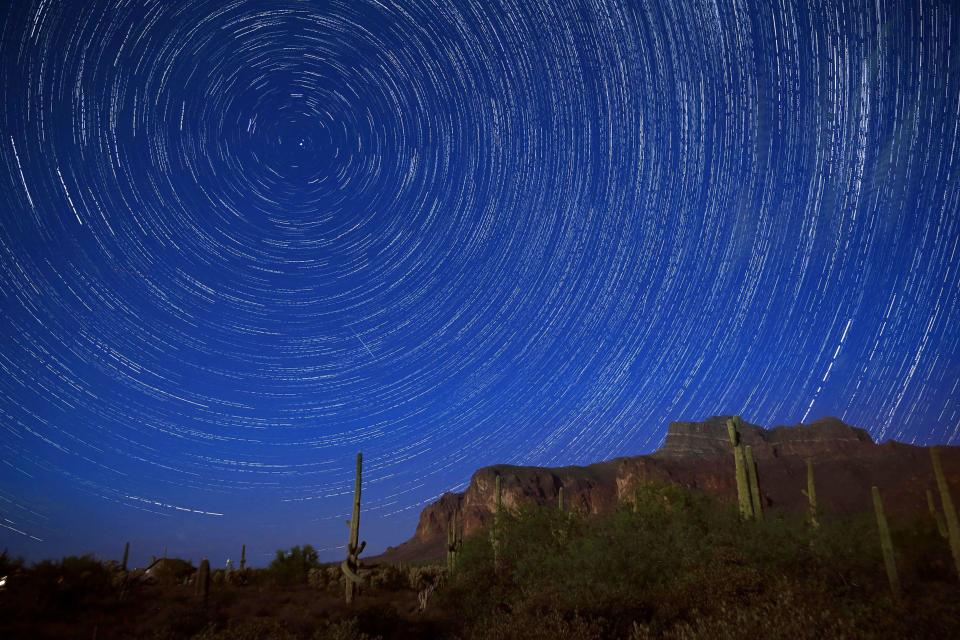
Known for its spectacular light show, the colorful fireballs appear to radiate from the constellation of Perseus, named after the Greek hero. However, Space.com said the meteor shower this year will be severely hindered by the light of a full moon.
Sept. 26: Perihelic opposition of Jupiter
Jupiter, the largest planet in the solar system, will make its closest approach to Earth for the first time since October 1963 at a distance of 367.4 million miles. The big planet will loom large and bright against the dim stars of the constellation Pisces, according to Space.com.
Nov. 8: Total lunar eclipse
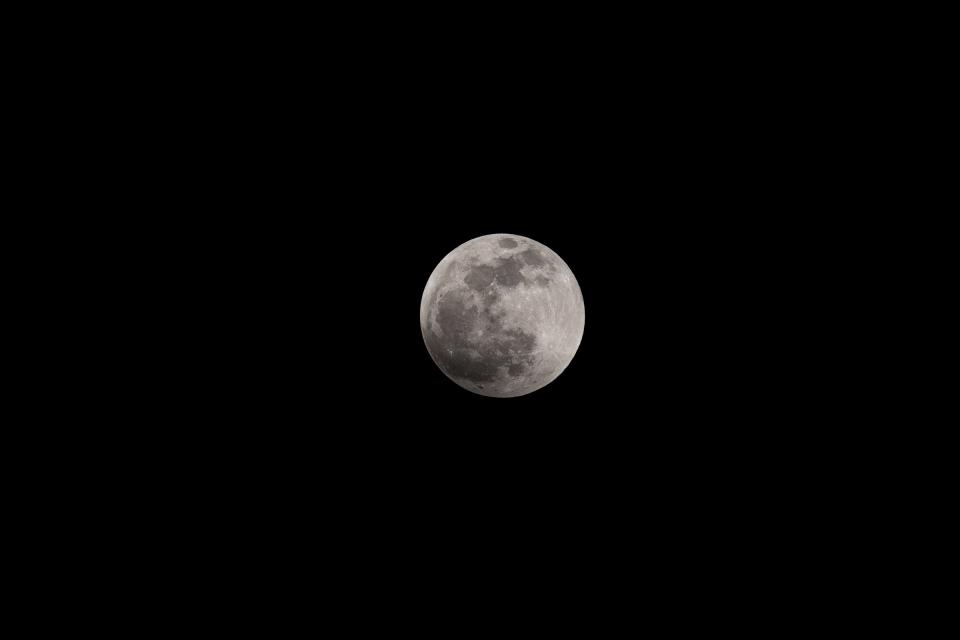
Like Sunday's eclipse, the moon will turn red during this astronomical event, beginning at 3 a.m. Totality, or the point at which the moon is covered in the darkest part of the Earth's shadow, will be particularly long: 1 hour 25 minutes. The bad news for those of us in Greater Columbus, however, is that the Midwest is only expected to get a partial show, according to Smithsonian Magazine.
Dec. 7-8: The moon and Mars
During the evening hours, parts of North America may be able to see a full moon align above Mars, which will hide the planet. Then on Dec. 8, Mars will rise as the sun sets, said Space.com. It will then reach its highest point in the sky at midnight and set at sunrise. Mars is expected to be so bright, it will outshine even Sirius, which is the brightest star in the sky.
Dec. 13-14: Geminid meteor shower
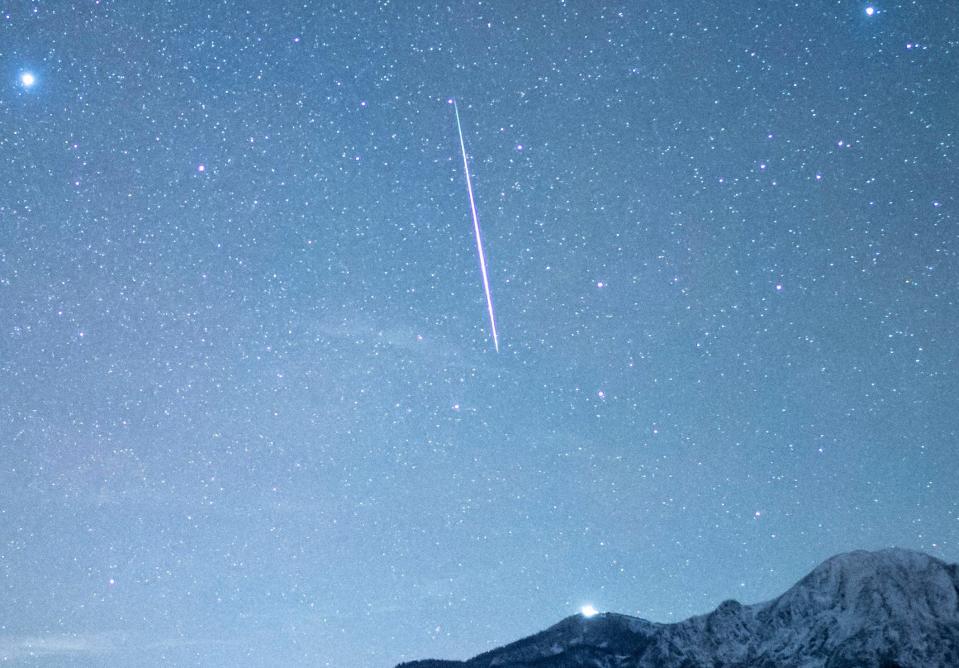
According to Space.com, the Geminids are considered one of the best meteor showers every year because the individual meteors are bright and come fast. The name Geminid is derived from the constellation Gemini, from which it appears to emanate.
This year's show is the result of 3200 Phaethon, which is a hybrid between an asteroid and a comet that orbits the sun every 1.4 years and leaves a trail of dust and rocks in its wake, said Smithsonian Magazine. The annual show could produce between 120 to 160 meteors per hour.
Micah Walker is the Dispatch trending reporter. Reach her at mwalker@dispatch.com or 740-251-7199. Follow her on Twitter @micah_walker701.
This article originally appeared on The Columbus Dispatch: 8 astronomical events to check out for the rest of 2022

